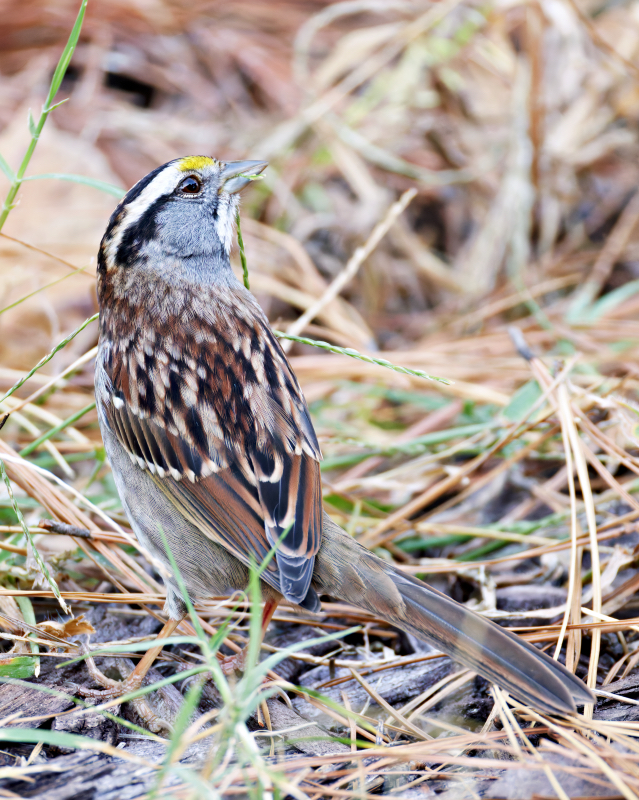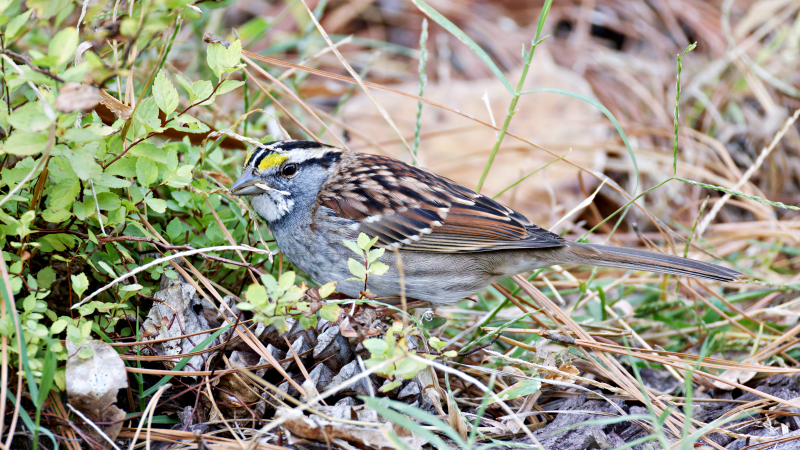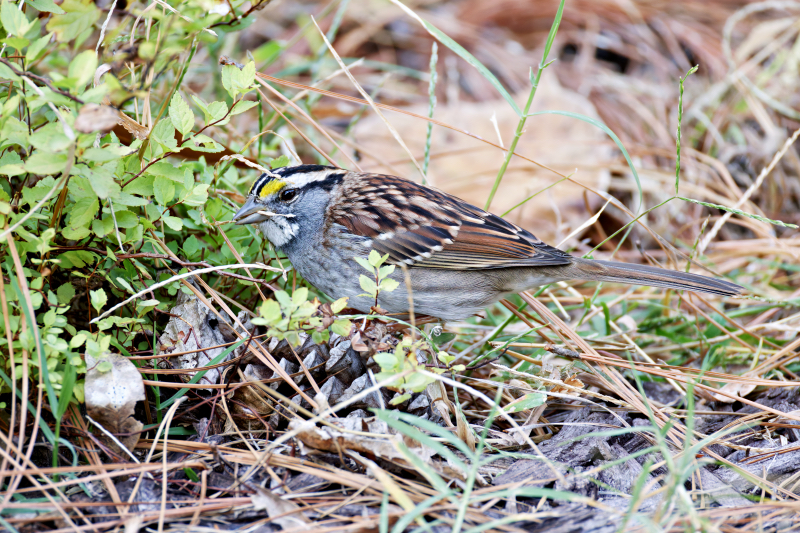This week, I’ve had the pleasure of seeing White-throated Sparrows returning to my yard. They tend to stay on the edges of my yard, especially in the shrubs, where they can forage without too much disturbance. On Friday, one ventured closer, allowing me to capture a few photos of it eating seeds from the grass growing near my deck. It’s always a welcome sight to have these sparrows around, signaling the shift in seasons.

The Annual Arrival of White-throated Sparrows
White-throated Sparrows are a familiar part of fall and winter birdwatching in Arkansas. As our summer birds migrate south, these sparrows begin arriving from their northern breeding grounds, traveling primarily at night. Arkansas falls along their migration path in the Mississippi Flyway, making it a regular stopover and wintering ground for these sparrows. They often forage on the ground in loose flocks, sticking close to thickets, shrubs, and feeders where food is abundant. Their white throat patch and distinctive yellow spot between the eye and bill make them easy to identify among other sparrows.
Behavior and Foraging Habits
While observing these sparrows, I noticed their preference for staying close to cover, darting out only briefly to search for seeds on the ground. They can often be seen kicking through leaf litter or picking at low plants for seeds and insects. The sparrow I photographed seemed particularly intent on the grass seeds near my deck, a typical behavior as they forage for high-energy foods to sustain them through the colder months. Watching them hop around and feed is a reminder of how even small backyard spaces provide important resources for migrating and wintering birds.

Technical Details of the Shot
For this encounter, I used the following camera settings:
- Date: 10/25/24
- Time: 10:00:58 AM
- Camera Model: Canon EOS R5
- Lens: Canon RF 200-800mm
- Focal Length: 800mm
- ISO: 10000 to manage the overcast morning light
- Aperture: f/9 for detailed depth of field
- Shutter Speed: 1/800 sec to freeze any movement
- Exposure Compensation: +1.0 to brighten the image
The high ISO allowed me to capture the image with a fast enough shutter speed, even with the somewhat dim light. This helped bring out the details in the sparrow’s plumage while maintaining a clean background. The aperture of f/9 provided the depth needed to keep the entire bird in sharp focus, showcasing the intricate patterns on its back and wings.
Tips for Attracting White-throated Sparrows
If you’re interested in attracting White-throated Sparrows to your yard, here are some tips:
- Food Sources: They are ground foragers, so scatter seed mixes that include millet and cracked corn on low platforms or directly on the ground.
- Shrubs and Thickets: Sparrows feel safer with cover nearby. Adding native shrubs or leaving areas of natural vegetation provides them with protection and encourages foraging.
- Bird Feeders: While they primarily feed on the ground, White-throated Sparrows may visit feeders, especially during harsher winter conditions. A simple ground feeder with seed mix is often enough to attract them.
I look forward to seeing more White-throated Sparrows in the coming months as they settle into Arkansas for the winter. Their subtle beauty and gentle songs add life to the yard during the quieter winter months. Watching them reminds me of the small but significant ways we can support wildlife through seasonal changes.

